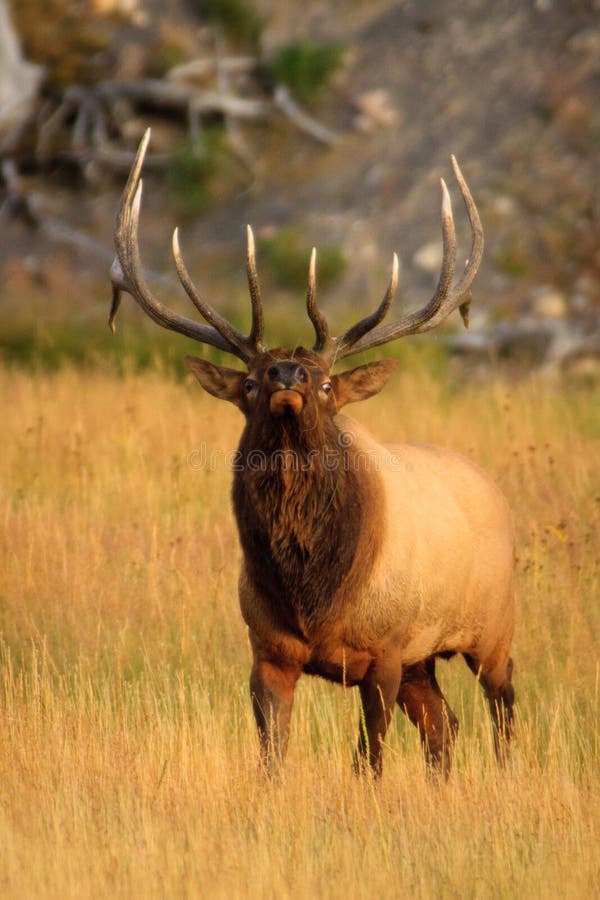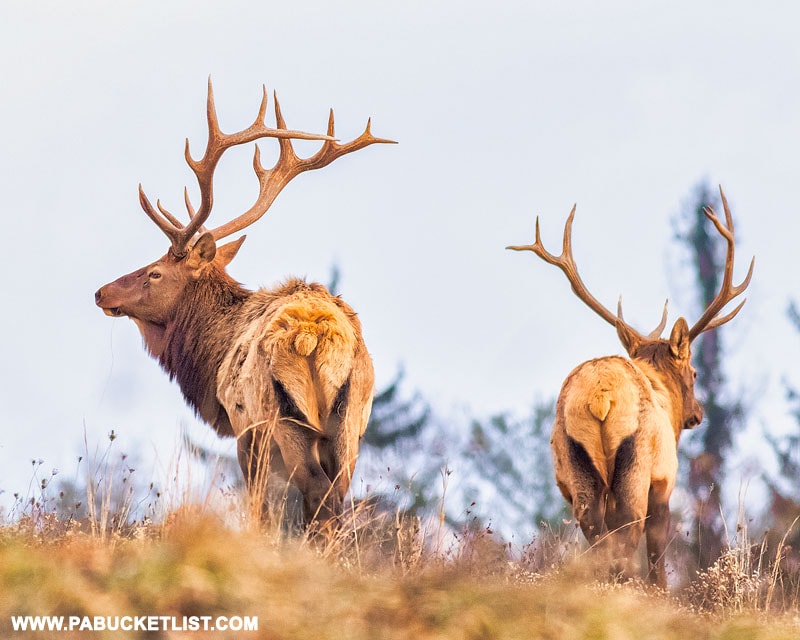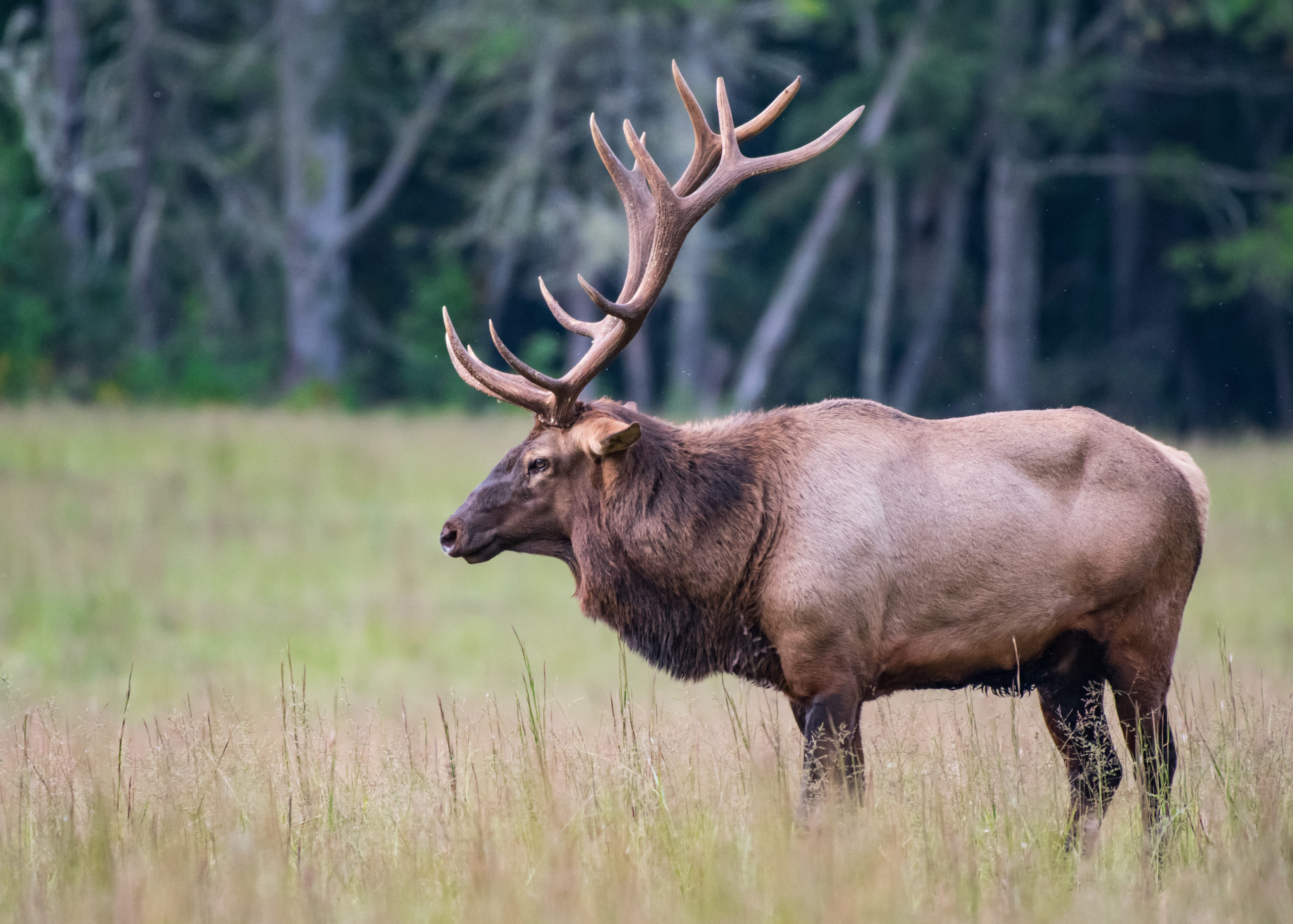

And then there's wallowing behavior where they roll in the mud, which makes them smell more intimidating, look bigger - because it makes them darker. And then rubbing trees to strengthen their necks and darken their antlers. It all starts with antler velvet shedding in mid-August. I'm curious about what kind of behaviors are part of elk rut other than the bugling. And there's one other advantage to the female, and that is protection from pesky younger suitors. Ultimately, they're choosing the best genetics for their calves. So, females are selecting based on physical traits. By doing so they're selecting a proven male that's older, who’s proven his ability to survive many years and secure resources in terms of forage, which translates into larger antlers and larger body size. The bulls are bugling to attract females, and that harem not only gives the male more breeding opportunity, but females are choosing which bull they're associating with. Males advertising and forming harems is really rare in deer species. What is elk rut? Why does it happen?Īndy Holland: It's one of nature's most amazing spectacles and it's all about mate selection, breeding and survival of species - or as you put it, cruising for a date. These interview highlights have been lightly edited for length and clarity.Įrin O’Toole: Let's start with the basics.

Colorado Parks and Wildlife’s big game manager, Andy Holland, joined Colorado Edition to talk all things elk rut. September is high elk rut season, which coincides with the autumn equinox. Many nature enthusiasts head into the mountains during the elk rut to catch a glimpse of the spectacle. It’s part of an elaborate annual ritual called the elk rut - the sound of elk bulls cruising for a date. Today, those antlers hang in Crested Butte’s Heritage Museum.Elk bugling is one of the classic sounds of autumn in the Colorado mountains.

In 2016, the antlers sold at auction for $121,000, and the new owner agreed to keep them on public display. The antlers returned to Crested Butte in 1971, where they sat in a hardware store. The rack hung in the saloon and was officially measured in 1961. By 1915, Plute had run up a decent bar tab, and he paid it with those antlers. When he got back to town, though, no one believed Plute when he told them how big the rack was. As usual, he took the meat and left the antlers. One day in 1899, he went up Dark Canyon, 12 miles west of Crested Butte and killed a fine bull. He lived in a boarding house, occasionally trading wild game meat for rent. At 31, John Plute was a miner around Crested Butte, Colorado. Decades ago, Zumbo tracked down the details of what was then the world’s largest typical elk. We have outdoor writer Jim Zumbo to thank for that. More than a century old, this rack has plenty of details relating to its demise. The score, along with proof of a fair chase hunt, established this elk as (and still is) the typical World’s Record. Ellsworth’s mental “rackulator” paid off. Ellsworth tracked down the owner of the truck and ended up buying the rack. When Alan Ellsworth pulled up next to the truck, he was only interested in the rack.Įllsworth is an antler buyer who grew up in the White Mountains of eastern Arizona-a place that has now become synonymous with giant, record-book bulls. Also in the back of the truck was a washer/dryer set. The rack was given to Lon’s sister, and one day in 1995 it ended up in the back of a pick-up parked outside of a bar. Even though the rack was stored in a garage for years, Winters would show it off every chance he got. Winters shot the bull with his Savage Model 99. In the fall of 1967, Winters and his friend spotted this bull in the White Mountains near the Black River. He came home from the war to punch cows, raise a family, and hunt. His mother rode a donkey to the hospital in Globe, Arizona, where Lon was born.


 0 kommentar(er)
0 kommentar(er)
